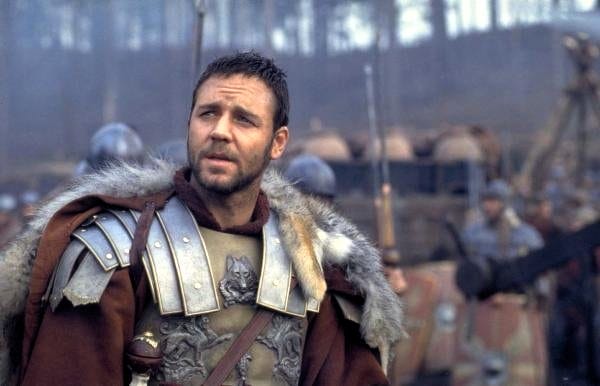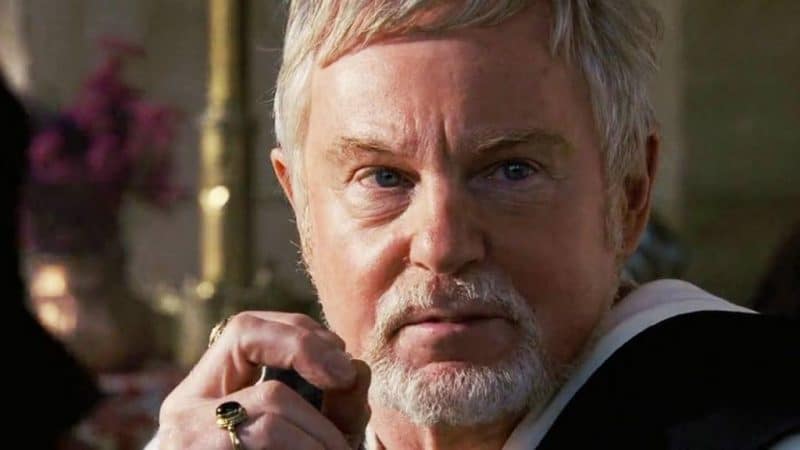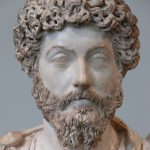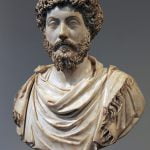General Maximus is the main character of the historical drama “Gladiator” (2000) – which is thought to be one of the best films ever made. The question that every viewer ask is to what extent the plot is consistent with the historical truth. I will try to answer this question.
The director of “Gladiator”, Ridley Scott, hired a few historians to work on the film. But what’s noteworthy, one of them finally resigned from cooperation, being disappointed in avoiding the truth, and the other asked him not to put his name in the credits of the film. This clearly proves that the famous director wanted to colour the facts and introduce numerous modifications in the historical truth.
The first issue to be emphasized is the fact that emperor Marcus Aurelius was not killed by his son Commodus. According to the transmissions of most ancient sources, the emperor died in 180 CE in Vindobona (modern Vienna, Austria) because of the raging plague that consumed the ranks of the Roman army. It is true that at that time, Marcus Aurelius fought with the Marcomanni, with whom later on Commodus made an unfavourable agreement in order to have a free hand for entertainment in the capital. It is worth noting, however, that before death Marcus Aurelius co-ruled with his son for three years and prepared him for his successor. Thus, Commodus did not have to feel threatened and accelerate the death of his father, as presented in the film.
Marcus Aurelius certainly also did not want to give power to the Senate. Rome at that time had already undergone a real political transformation and the senate’s influence on any decisions in the state was illusory and had rather an honorary character. The Senate played the role of an advisory body which, depending on the ruler, was respected or not. So, the idea that Aurelius chose Maximus as his successor in order to return the power to the “people” was completely untrue.
Let’s now focus on Maximus. It should be emphasized immediately that his image has been completely fabricated. When creating this character, several figures from the Roman world were used: Narcissus – the Roman athlete that strangled Commodus on December 31, 192 CE in the tub1 or bed2; Spartacus – Thracian leader of a slave uprising in Italy (73-71 BCE); Cincinnatus – dictator from 458 BCE, who after defeating the Aequi, returned to work in the field; or Marcus Nonius Macrinus – the commander, friend and adviser of Marcus Aurelius. Maximus thus combined the features of an eminent citizen, a leader and a man who was to bring the Empire to the path of the republic and then return to his household in Spain.
Sometimes also is noted the similarity of Maximus to Tiberius Claudius Pompeianus, a Syrian who married the daughter of Marcus Aurelius, Lucilla, after the death of her husband, Lucius Verus. It is also suspected that the emperor could have plans to the nominee as a successor Pompeianus, as a trusted son-in-law. However, there is no evidence for this.
As mentioned before, Commodus did not die in the arena – where in fact he liked to compete with animals or warriors, as Hercules. In reality, Commodus was killed by conspirators; what’s more, he ruled for 12 years, what is much longer than we have been shown in the film.
It is also not true that Marcus Aurelius forbade the gladiatorial battles in Rome – as states in the film lanista Proximo. Such fights were never forbidden in Rome until 326 CE when ruled Constantine I. Marcus Aurelius forbade this entertainment only in the city of Antioch, what was a punishment for the people for supporting the usurper Avidius Cassius.
One of the main characters, senator Gracchus, did not really exist either. For sure his character was modelled on the brothers of Tiberius and Gaius Gracchus, plebeian tribunes, who with their lives have paid off the pursuit of changes in favour of poor people.
The previously mentioned Lucilla, the daughter of Marcus Aurelius and sister of Commodus, really existed and, according to the film was married to Lucius Verus. What’s more, the film’s plot agrees with the information from ancient historians about her participation in the conspiracy for the life of Commodus. After its detection, in 182 CE, Lucilla was exiled to the island of Capri (Capreae), where she was later murdered. Here, however, there is a difference – Lucilla survives.
Also, worth noting, is the tattoo of Maximus – SPQR (Senatus Populusque Romanus meaning “The Roman Senate and People”), which adorned his arm. Higher social layers have not tattooed their bodies. The habit of making tattoos occurred mainly among the barbarians as evidence of their strength and symbolism. In Rome, the tattoo had a degrading dimension of dignity. Tattoos were made, for example, on slaves or criminals, in visible places, so as to facilitate their capture in case of an escape. Only in late Roman times, when the Imperial army consisted mainly of mercenaries, they decided to tattoo their body, so that they could easily recognize deserters.
Finally, it is worth mentioning that after the death of Commodus, there were no peaceful times in the Empire, and the rule did not return to the “noble” committee of senators. The new emperor became Pertinax, who was very popular among the people. The public was terrified, however, that the Praetorians would not recognize the successor of Commodus and that there would be a civil war. And they were right. There was an event commonly known as “The Year of the Five Emperors” in 193 CE when the fight for power was held between several rivals. Finally, won Septimius Severus, the creator of the new dynasty, who wants to legitimize his government, claimed himself as the son of Marcus Aurelius and brother of Commodus. Thus, he wanted to maintain the continuity of the finest dynasty that ever ruled the Roman Empire.











